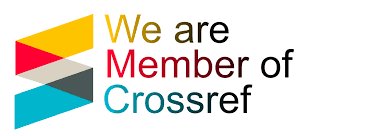METHODOLOGY OF DEVELOPING STUDENTS' CREATIVE ABILITIES USING NEW TECHNOLOGIES IN BIOLOGY CLASSES
DOI:
https://doi.org/10.63034/esr-12Keywords:
Creative Abilities, New Technologies, Biology Classes, Education, Virtual RealityAbstract
In the ever-evolving landscape of education, fostering creativity in students has become paramount. This research aims to present a comprehensive methodology for enhancing students' creative abilities in biology classes through the integration of new technologies. Creativity is a crucial skill for problem-solving, critical thinking, and innovation, making it essential for students to develop creative thinking from an early age. Our methodology involves the judicious use of innovative technologies, such as virtual reality simulations, augmented reality apps, and interactive online platforms, to create engaging and immersive learning experiences. By leveraging these tools, students can explore complex biological concepts in ways previously unimaginable. These technologies provide opportunities for hands-on experimentation, visualization of abstract concepts, and collaboration with peers, fostering creativity through active learning. Furthermore, we incorporate pedagogical strategies that encourage divergent thinking, curiosity, and exploration. Our approach aligns with constructivist and socio-constructivist theories, emphasizing the role of social interaction and collaboration in creative learning. We also emphasize the importance of a supportive learning environment that encourages risk-taking and experimentation. This research draws from both qualitative and quantitative data, including student assessments, surveys, and observations. Preliminary results indicate a significant enhancement in students' creative thinking abilities, manifested through innovative project submissions, insightful discussions, and a newfound enthusiasm for biology..
References
Bocconi, S., Dettori, G., & Persico, D. (2021). Ethical and Privacy Challenges in EdTech: A Systematic Literature Review. IEEE Transactions on Learning Technolo-gies, 14(3), 229-246. DOI: 10.1109/TLT.2020.3011207
Johnson, D., Campbell, T., Hsu, Y., & Mitamura, T. (2016). Technology‐Enhanced Learning Environments: A Re-view of Their Design, Pedagogical Support, and Effectiveness. Educational Psycholo-gy, 51(2), 257-274. DOI: 10.1080/00461520.2016.1158654
Ribeiro, Á., Rodrigues, P., & Pereira, A. (2019). Fostering creativity through vir-tual reality in education: A systematic review. Computers & Education, 129, 14-33. DOI: 10.1016/j.compedu.2018.10.008
Sengupta, S., Fortier, M., & Paretti, M. (2019). Effects of Instructional Technolo-gy on Creativity: A Literature Review. Educational Technology Research and Development, 67(2), 289-327. DOI: 10.1007/s11423-018-9631-x
Acero, J., Bustos, E., & Quesada, D. (1982). Introducción a la filosofía del len-guaje. Cátedra.
Collins, J., Hall, N., & Paul, A. (Eds.). (2004). Causation and Counterfactuals. The MIT Press.
Horkheimer, M., & Adorno, T. W. (1972). Dialectic of Enlightenment. Herder and Herder.
Husserl, E. (1950). Cartesianische Meditationen und Pariser Vorträge. Nijhoff, Den Haag.
Kar, E. (2019). Universality and Par-ticularity of Aristotelian Substances. [Doctoral thesis]. The University of Bris-tol. URL
Kitsantonis, N. (2016, May 26). Greek Archaeologist Says He Has Found Aristo-tle’s Tomb. The New York Times. URL
Kripke, S. (1980). Naming and Neces-sity. Harvard University Press.
Mullett, M. (2021, April 20). Perfor-mance Issues in the Christos Paschon. [Video]. GKA HUMAN 2021 - 10th Inter-national Conference on Humanities. URL
Quine, W. O. (1951). Two Dogmas of Empiricism, The Philosophical Review, 60, 20–43.
Quine, W. O. (1960). Word and Object. MIT Press.
Downloads
Published
How to Cite
Issue
Section
Categories
License
Copyright (c) 2023 ABDIEVA AIGERIM MUHIDINKYZY

This work is licensed under a Creative Commons Attribution 4.0 International License.





